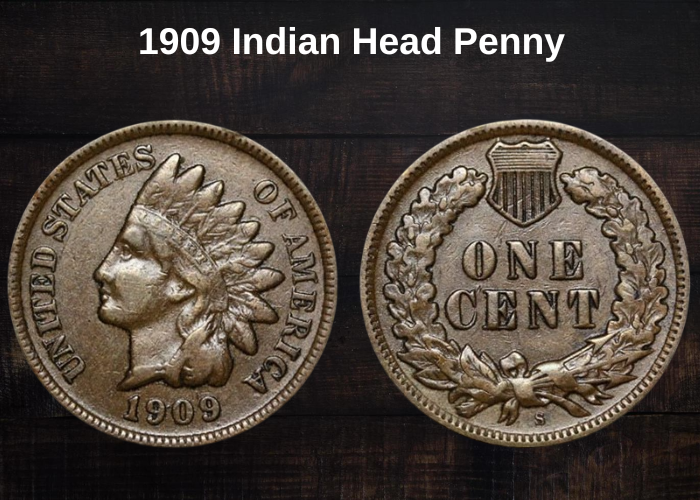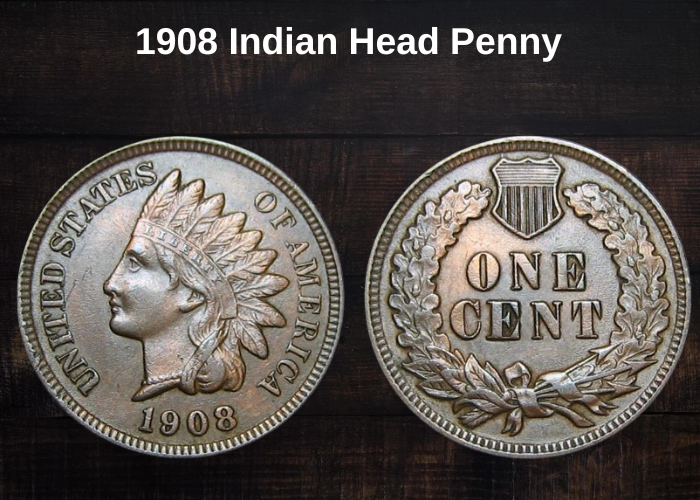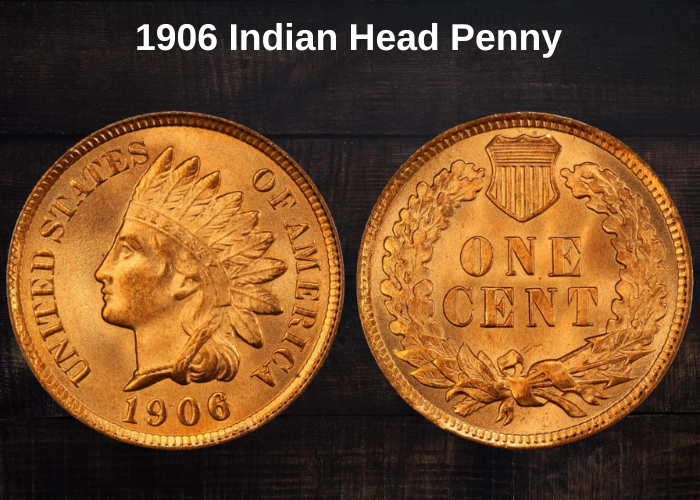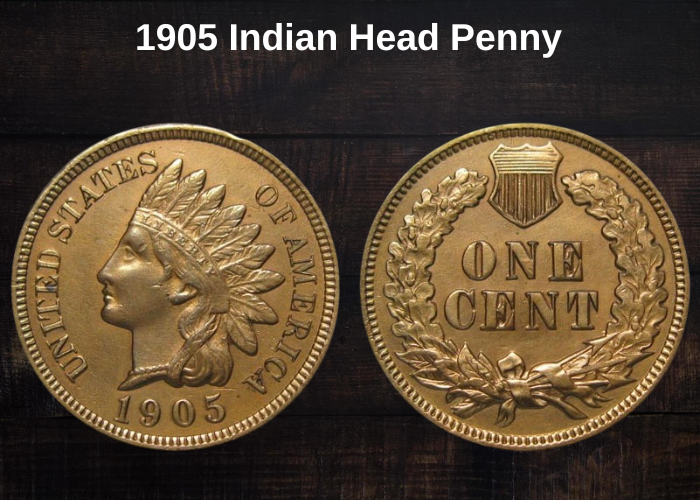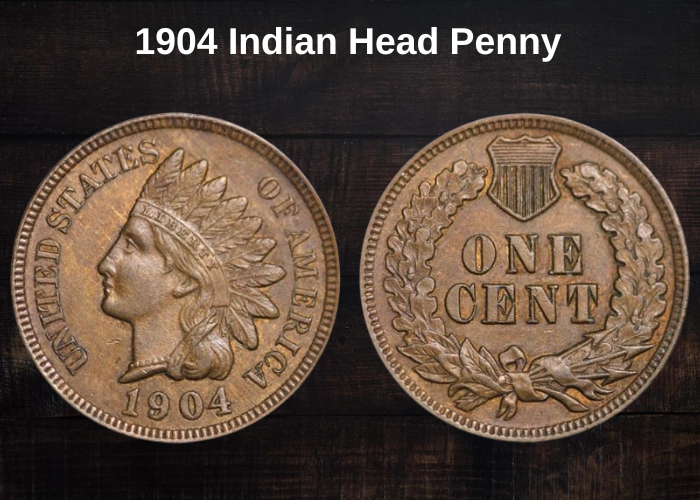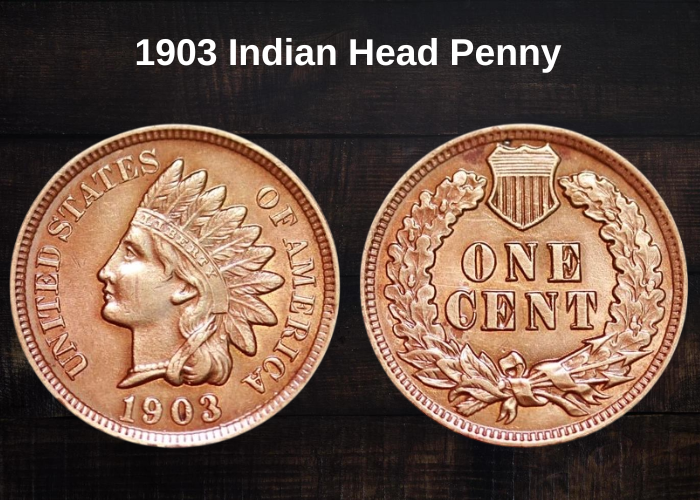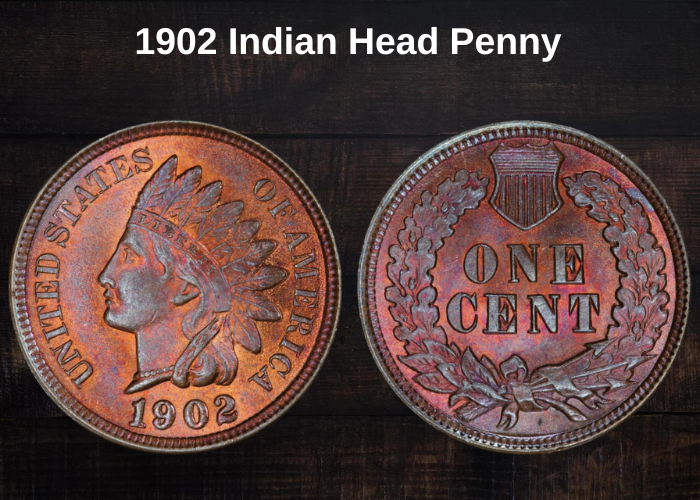The 1900 Indian Head Penny holds a special place in numismatics, and like many other older coins, its value can vary significantly based on condition, color, and rarity. Here’s a breakdown of its value depending on the grade and other characteristics:
1900 Indian Head Penny Value Chart
| Mint Mark and Color | XF45 | MS60 | MS65 | MS67 |
|---|---|---|---|---|
| 1900 (P) No Mint Mark Indian Head Penny, Brown | $22 | $67 | $240 | $1,100 |
| 1900 (P) No Mint Mark Indian Head Penny, Red and Brown | n/a | $70 | $350 | – |
| 1900 (P) No Mint Mark Indian Head Penny, Red | n/a | $75 | $750 | $10,000 |
Proof Coins:
| Mint Mark and Color | PR60 | PR63 | PR65 | PR67 |
|---|---|---|---|---|
| 1900 (P) No Mint Mark Proof Indian Head Penny, Brown | $150 | $265 | $550 | $2,500 |
| 1900 (P) No Mint Mark Proof Indian Head Penny, Red and Brown | $165 | $300 | $675 | $4,000 |
| 1900 (P) No Mint Mark Proof Indian Head Penny, Red | $200 | $350 | $1,300 | $10,500 |
| 1900 (P) No Mint Mark Proof Indian Head Penny, Cameo | n/a | $750 | $6,250 | $27,500 |
History of the 1900 Indian Head Penny
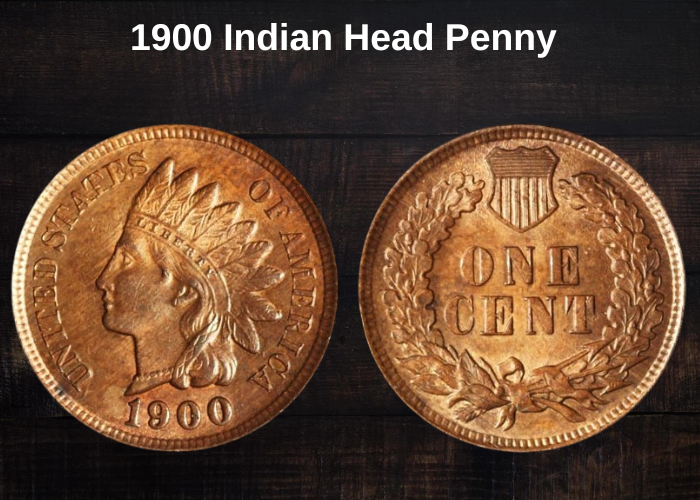
The Indian Head penny derives its name from the design on the obverse, or “heads” side of the coin. The image initially appears to depict a Native American wearing a feathered headdress. However, upon closer inspection, it’s revealed that the face is actually that of Lady Liberty, and the word “LIBERTY” is inscribed on her headband.
This design was created by James Barton Longacre, the Chief Engraver of the U.S. Mint, who was tasked with replacing the earlier Flying Eagle penny. The Indian Head penny was first minted in 1859.
Both the Indian Head penny and its predecessor were smaller than previous cent coins. This reduction in size was prompted by two main reasons: the rising cost of copper and complaints about the previous pennies being too cumbersome.
The Indian Head penny had a diameter of 19 millimeters, much smaller than the earlier coins that measured 28.6 millimeters. Despite being smaller, it was thicker than modern pennies.
By 1900, the composition of the Indian Head penny had changed. Initially, the coins were made of 88% copper and 12% nickel. However, in 1864, the formula was modified to 95% copper and 5% tin and zinc, making the penny lighter—weighing just 3.11 grams as opposed to the original 4.7 grams.
On the reverse of the 1900 penny, you’ll notice slight design modifications from the early Indian Head pennies. These changes, which occurred in 1860, included replacing the laurel leaves with oak leaves in the wreath, adding a shield at the top, and refining the cut of Liberty’s bust.
Until 1907, cent coins were exclusively minted at the Philadelphia Mint. After that, San Francisco also produced Indian Head pennies, marked with the “S” mint mark. The series was discontinued in 1909 when the Lincoln penny replaced the Indian Head design.
Features of the 1900 Indian Head Penny
The Obverse of the 1900 Indian Head Penny
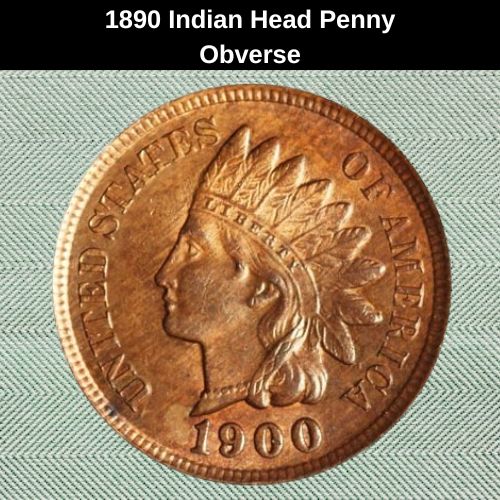
The obverse of the 1900 Indian Head penny is what gives the coin its nickname. It features a profile of Lady Liberty wearing a Native American headdress. This design was a unique blend of a Caucasian woman with traditional Native American warrior headgear, which even raised eyebrows at the time of its creation. James Ross Snowden, the Mint Director, commented on the unusual pairing of the two, yet he still chose the design over two others that were based on the Flying Eagle penny.
The decision to use this design was likely influenced by practicality—the relief of the Indian Head penny design was the lowest of the three options, making it easier to strike the coins.
Despite initial criticism, the Indian Head penny has since become one of the most beloved and iconic coins in American numismatics.
On the obverse, you’ll also find the words “UNITED STATES” inscribed to the left of Liberty’s head, and “OF AMERICA” inscribed to the right. The date is placed at the bottom of the coin in the same-sized lettering. These elements help complete the distinctive look of this classic piece of American coinage.
The Reverse of the 1900 Indian Head Penny
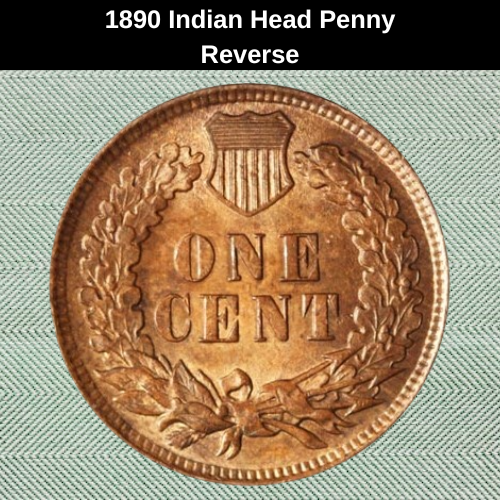
The reverse of the 1900 Indian Head penny features a wreath of oak leaves, which symbolizes strength and endurance. At the top of the coin is a shield, representing the nation’s readiness to defend its liberty. At the bottom of the wreath, there are three arrows, which are symbols of the country’s sovereignty.
Within this wreath, you’ll find the denomination of the coin, “ONE CENT”, inscribed horizontally in the center, split across two lines.
Earlier Indian Head pennies did not have the shield, and the wreath used laurel leaves instead of oak. These changes were introduced in 1860, when the Mint Director, James Snowden, made alterations to give the coin more “national character”, helping to better reflect the country’s strength and unity during that time.
Other Features of the 1900 Indian Head Penny
The 1900 Indian Head penny measures 19 millimeters in diameter and weighs 3.11 grams, making it slightly smaller and lighter than older pennies made before 1920. Its size is nearly identical to that of a modern Lincoln penny, though it’s a little thicker.
This coin has a plain edge and is made from bronze, an alloy consisting of copper, tin, and zinc. The copper content gives the coin a color that can change based on handling or exposure to the air.
- A coin that’s been minimally handled or exposed to oxygen retains its red hue, typical of new copper.
- A more worn coin, exposed to more use or air, will develop a brown color over time.
Both the color and condition of an Indian Head penny play a significant role in its value, so it’s important to examine both factors when assessing a coin’s worth.
1910 Penny Grading
To accurately assess the value of your 1900 Indian Head penny, understanding its grade is essential. Coin grading is a standardized method of evaluating a coin’s condition based on factors like wear, luster, and detail preservation. Here’s a breakdown of the grading scale for your coin:
- 1 (Basal State-1): Extremely worn, details are almost completely absent.
- 2 (Fair): Very worn, but some major features are still visible.
- 3 (Very Fair): Worn with more recognizable details, though still quite faint.
- 4-6 (Good): Noticeable wear, but identifiable features such as the date and mintmark.
- 7-10 (Very Good): Moderate wear, but details are still visible and legible.
- 12-15 (Fine): Noticeable wear, but still distinct features and clearer design.
- 20-30 (Very Fine): Light wear, most design details are intact.
- 40 (Extremely Fine): Light wear on high points; excellent detail.
- 50 (About Uncirculated): Very light wear, almost like new, but with slight signs of use.
- 60 (Mint State): No visible wear, but the coin may have imperfections from production.
- 65 (Mint State): Well-struck with minimal imperfections, a coin in great condition.
- 70 (Mint State): Perfect, as if just struck from the Mint, no signs of wear or imperfections.
The coin’s grade directly impacts its value. Coins in higher grades, like Mint State or About Uncirculated, can be worth significantly more than those in lower grades, like Basal State or Fair.
Check the grading guides and compare your coin with detailed images to determine its condition accurately. This will give you a much clearer idea of its value in the market.
1900 Indian Head Penny Values Guides
1900 No Mint Mark Indian Head Penny Value
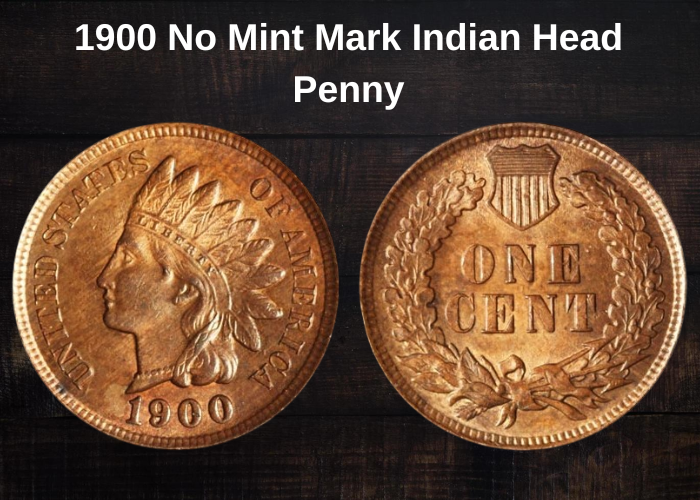
In 1900, all Indian Head pennies were struck at the Philadelphia Mint, and none of these coins feature a mint mark. This means that the coins you find from this year will have no indication of where they were produced, unlike later years when coins were struck at different mint facilities like San Francisco.
The mintage for the 1900 Indian Head penny was about 67 million business strike coins, intended for circulation. However, the survival rate for these coins has been significantly lower due to age and wear, with only a few thousand examples remaining in good condition. Here’s an overview of the estimated surviving numbers:
- Brown Coins: Around 4,000 surviving.
- Red and Brown Coins: About 800 remaining.
- Red Coins: Approximately 1,000 remaining.
Value Breakdown by Grade:
- Brown 1900 Indian Head Penny (Poor Condition):
- Grade 1: $1 to $3.
- Grade XF45: Around $22.
- Grade MS60: $67.
- Grade MS65: $240.
- Grade MS67: $1,100.
- Red and Brown Coins:
- Grade MS65: $350, about $150 more than the brown coin equivalent at the same grade.
- Red Coins (Highly Desirable):
- Grade MS60: $75.
- Grade MS65: $750.
- Grade MS67: $10,000.
- Finest Red Coins (MS67+):
- Valued at $28,200 for certified examples in this condition.
As the coin’s condition improves, so does its value. Red coins, especially in MS67+ grade, are among the most valuable, with rare, well-preserved examples reaching significant market prices.
To get the best price, you can consider selling your coins through a trusted coin dealer. Searching for one near you, with reviews and ratings, could help you connect with the best option for your sale.
1900 No Mint Mark Proof Indian Head Penny Value
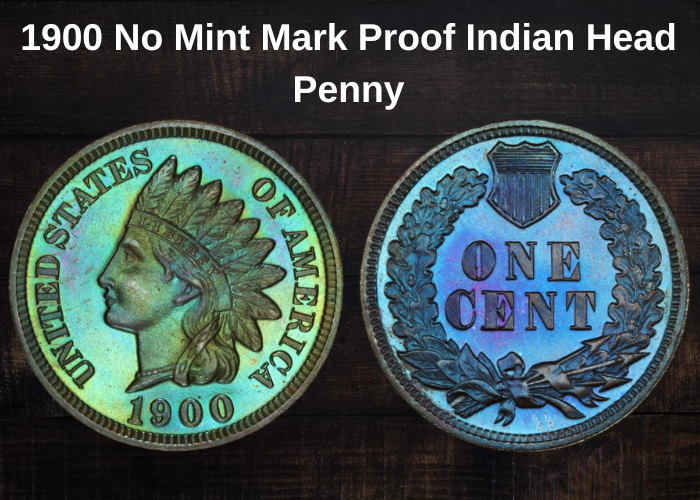
The 1900 Proof Indian Head pennies are highly collectible due to their low mintage, with only 2,262 coins struck. These coins were crafted with care, using hand-selected planchets and specially prepared dies, and were destined for collectors or coin archives rather than circulation.
Over time, the survival rate for these coins has dropped, making them increasingly rare and valuable. They are categorized into four groups: the three standard colors (brown, red and brown, and red) and cameos, which have a distinct contrast between the mirror-like fields and the frosted design.
Value Breakdown for 1900 Proof Pennies:
- Brown Proof Coins:
- PR60: Around $150.
- PR65: $550.
- PR67: $2,500.
- Red and Brown Proof Coins:
- PR60: $165.
- PR67+: $5,500.
- Red Proof Coins:
- PR60: $200.
- PR67+: $15,000.
- The highest-graded example (PR68 by NGC) was sold for $7,800 in 2017.
- Cameo Proof Coins (Highly Desired):
- PR62: $400.
- PR64: Around $2,000.
- PR67: $27,500 (highest value for cameos, according to PCGS).
As with other coins, the condition significantly influences the price, with cameos being the most desirable and fetching the highest premiums. Given the rarity and demand, the 1900 Proof Indian Head penny is an excellent addition for collectors and investors alike.
Rare 1900 Indian Head Penny Errors List
1900 (P) No Mint Mark Indian Head Penny, Repunched Date
The 1900 Indian Head penny has three distinct repunched date varieties, each with different characteristics. Here’s a breakdown of each variety and their potential value based on the coin’s condition:
1. First Variety:
- Description: The repunching is subtle. Look for a single line curving to the northeast of the final “0”, which is the top of the original digit.
- Value (Estimation):
- VF20: Around $45.
- AU58: Around $100.
- Red and Brown MS65: Around $450.
2. Second Variety:
- Description: The repunching is visible on the top of the “1”, the middle of the “9”, and the top of the second “0”. This variety is hard to spot with the naked eye, so using a microscope or loupe is necessary.
- Value (Estimation):
- VF20: Around $45.
- AU58: Around $100.
- Red and Brown MS65: Around $450.
3. Third Variety (Certified by NGC):
- Description: This variety shows the original “9” to the left and bottom of the final “9”. The lower part of the original “0” can be seen at the bottom of the final “0”.
- Value: There isn’t enough pricing history yet, but it is likely to be more valuable than the first two due to its clarity.
General Value for Repunched Date:
- The value of these coins depends largely on the condition. The better the grade, the higher the value, especially for MS65 and above.
1900 (P) No Mint Mark Indian Head Penny, Obverse Lamination
A lamination error occurs when there is a defect in the planchet’s composition, causing parts of the coin’s surface to peel away. This results in portions of the design being missing or damaged, giving the coin a unique, uneven appearance.
However, lamination errors can be tricky to differentiate from post-mint damage, so it’s essential to have the coin certified by a reliable grading agency to confirm its authenticity before considering it as a premium collectible.
For example, a 1900 Indian Head penny with a subtle obverse lamination error was found. This coin, graded EF45 (“extremely fine”) by ANACS, is being offered for sale on eBay for approximately $44.
If you encounter a coin with a lamination error, always verify its authenticity to ensure you’re getting the real deal and not just a damaged piece.
FAQs
What makes a 1900 Indian Head penny valuable?
Several factors determine the value of a 1900 Indian Head penny:
- Proof pennies are always valuable, due to their limited production. Proofs with cameo features (shiny fields and frosted designs) are the most prized, with the finest examples worth over $20,000.
- Color and condition are crucial for business strike pennies. A brown penny in poor condition might only be worth about $1, while red pennies in excellent condition can fetch as much as $7,000.
- Mint errors can significantly increase a penny’s value, depending on the rarity and severity of the error.
What year is the rarest Indian Head penny?
The rarest Indian Head penny is the 1864 proof penny. This coin is highly coveted due to it being the first year the Indian Head penny was produced in bronze and having a unique “L” on the neck of Lady Liberty, which was added later in the year. Only about 20 of these proof coins were struck. In 2011, one of these proof coins, graded PR65 red and brown, sold for $161,000, setting the auction record for an Indian Head penny.

